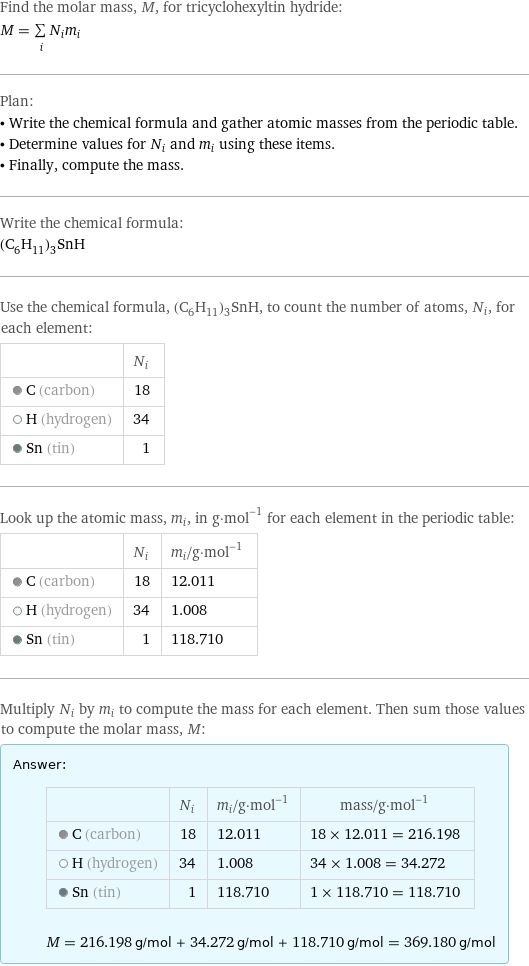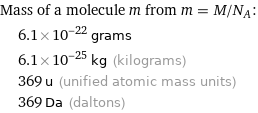Input interpretation

tricyclohexyltin hydride | molar mass
Result

Find the molar mass, M, for tricyclohexyltin hydride: M = sum _iN_im_i Plan: • Write the chemical formula and gather atomic masses from the periodic table. • Determine values for N_i and m_i using these items. • Finally, compute the mass. Write the chemical formula: (C_6H_11)_3SnH Use the chemical formula, (C_6H_11)_3SnH, to count the number of atoms, N_i, for each element: | N_i C (carbon) | 18 H (hydrogen) | 34 Sn (tin) | 1 Look up the atomic mass, m_i, in g·mol^(-1) for each element in the periodic table: | N_i | m_i/g·mol^(-1) C (carbon) | 18 | 12.011 H (hydrogen) | 34 | 1.008 Sn (tin) | 1 | 118.710 Multiply N_i by m_i to compute the mass for each element. Then sum those values to compute the molar mass, M: Answer: | | | N_i | m_i/g·mol^(-1) | mass/g·mol^(-1) C (carbon) | 18 | 12.011 | 18 × 12.011 = 216.198 H (hydrogen) | 34 | 1.008 | 34 × 1.008 = 34.272 Sn (tin) | 1 | 118.710 | 1 × 118.710 = 118.710 M = 216.198 g/mol + 34.272 g/mol + 118.710 g/mol = 369.180 g/mol
Unit conversion

0.36918 kg/mol (kilograms per mole)
Comparisons

≈ 0.51 × molar mass of fullerene ( ≈ 721 g/mol )

≈ 1.9 × molar mass of caffeine ( ≈ 194 g/mol )

≈ 6.3 × molar mass of sodium chloride ( ≈ 58 g/mol )
Corresponding quantities

Mass of a molecule m from m = M/N_A: | 6.1×10^-22 grams | 6.1×10^-25 kg (kilograms) | 369 u (unified atomic mass units) | 369 Da (daltons)

Relative molecular mass M_r from M_r = M_u/M: | 369